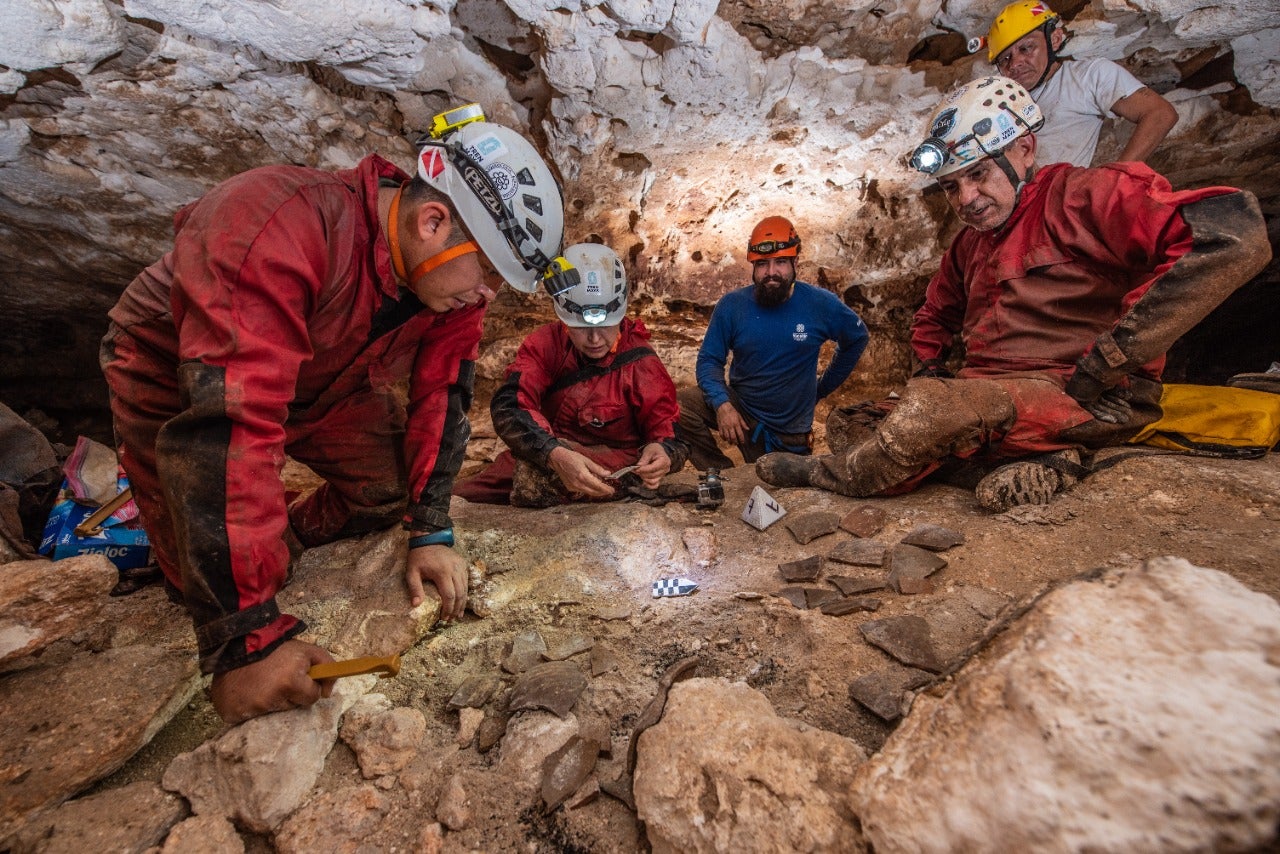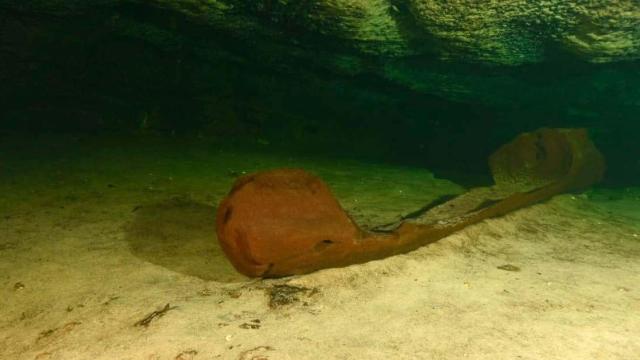Cenotes, submerged limestone sinkholes in Central America, have a fantastic record as repositories of ancient artifacts. Just last week, Mexico’s cultural heritage bureau announced another cave discovery: a centuries-old Maya canoe submerged in water.
The wooden watercraft is the most intact pre-Hispanic canoe ever found, according to Mexico’s National Institute of Anthropology and History (INAH), and it was discovered in the Yucatán by some archaeologists who were scoping out the area in advance of construction beginning on a controversial train project.
The canoe is estimated to date to between 830 CE and 950 CE, according to an INAH release, but next year, dendrochronological analysis (by which the rings in the wood of the canoe are counted, giving the age of the tree that was cut to make it) at the Sorbonne University in Paris could give an exact date.
The canoe was found on a site called San Andrés, which includes a three different bodies of water, including one cenote. The others were an ancient well and a rejoyada, a sort of deep valley. Such water bodies are great places to look for archaeological remains because many communities used them as ceremonial sites, in which to toss offerings. All three water bodies were searched by underwater archaeologists from INAH.
Helena Barbara Meinecke, who heads the underwater archaeology unit of the Yucatan INAH office, said in the agency press release that the canoe was actually found when the team was taking a break from the work, and she saw the ancient water mark on the wall of the cenote, about 4.57 m below today’s water level.

Diving down, the team found a cavern inside of which was the canoe. The craft is over 1.52 m long, nearly 0.91 m wide, and just over a foot tall. The team thinks that the canoe may have been used to remove water from the cenote or to bring offerings to the cave during rituals, as cenotes had ceremonial importance to Maya people.
In the well, the archaeologists also found human remains and ceramics, as well as a painted wall mural, all at a depth of 45.72 m below ground. In the rejoyada, the team found a mural dating to around 1200 CE to 1500 CE, a knife (which would’ve been used in rituals, according to the INAH), a rock stela, and intentionally broken pottery and charcoal.
The Maya Train project, as it’s called, remains controversial, with archaeologists and advocates for indigenous communities saying the train will do more harm than good; ironically, one of the train’s purported purposes is to ease transit to archaeological sites in eastern Mexico, but its construction threatens thousands of pre-Hispanic sites along the way, according to Smithsonian Magazine.
It’s a very good thing that these three bodies of water were investigated, in any case, as they’ve yielded a fantastic haul from the past. If archaeologists checking other regions along the proposed train path are as diligent, there likely will be more discoveries on the way.
